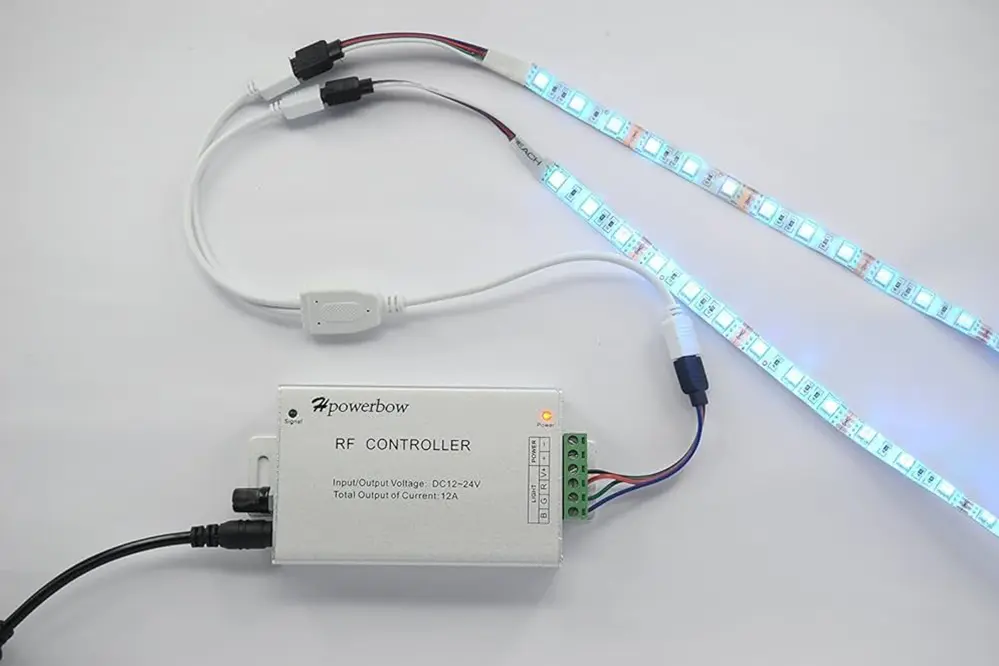“Good lighting can transform any space into a haven of productivity and comfort,” says renowned interior designer Kelly Wearstler. Understanding how to use splitter cables with LED light strips is a key aspect of achieving this transformation. These tools offer a versatile and efficient way to enhance lighting in various settings.
Lighting affects numerous aspects of life, from mood and productivity to the overall aesthetic of a space. Efficient lighting solutions like splitter cables with LED light strips can significantly improve these areas, making them more functional and inviting.
Ready to discover the secrets of efficient lighting? Dive into this article to learn how to use splitter cables with LED light strips and transform your space into a well-lit haven.
Introduction to LED Strip Splitters
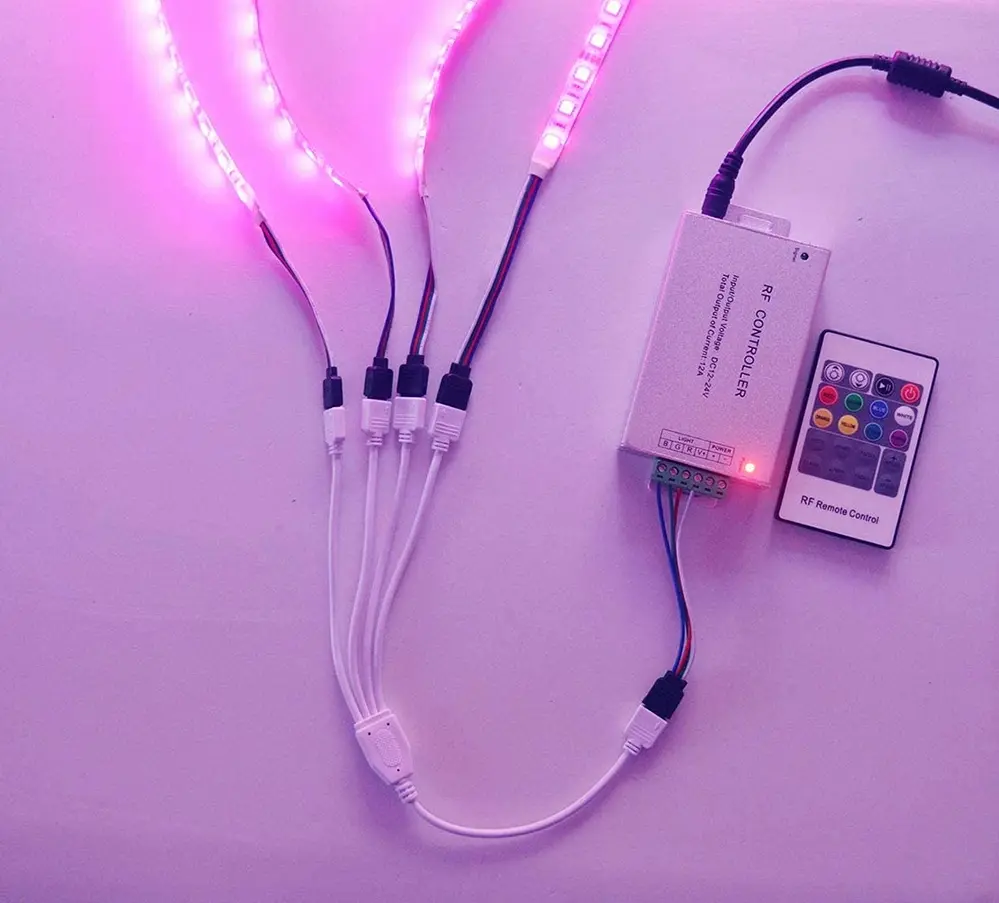
Understanding the role and benefits of splitters.
LED strip splitters are pivotal in creating efficient lighting setups. These small but mighty tools allow one to divide the power and control signals of a single LED strip source into multiple pathways, leading to an enhanced and cohesive lighting output. Essentially, splitters are the backbone of any sophisticated ambient lighting system, ensuring uniformity and brilliance in every corner.
They offer tremendous versatility for applications where lighting is pivotal, making every outlet a potential enhancement point.
With their simplicity and efficiency, LED splitters make it easy to light extensive areas – be it a room, a garden, or a commercial space – without the need for excessive individual wiring.
One can effortlessly manage various lighting patterns with a led splitter.
Moreover, advanced splitter designs often come with plug-and-play functionality, making installation straightforward even for those new to do-it-yourself projects. Whether one aims to highlight architectural features or create mood lighting, LED strip splitters provide the flexibility and convenience required for both residential and professional settings.
The potential of LED splitter cables in revolutionizing lighting is both promising and exciting. As technology continues to advance, new innovations and improved designs for these splitters emerge, promising brighter, more sustainable, and highly customizable lighting solutions.
Benefits of Using LED Strip Splitters
With LED strip splitters, multiple lighting segments converge into one harmonious system, ensuring uniformity and brilliance in every corner. These devices streamline installation processes.
They offer tremendous versatility for applications where lighting is pivotal.
Enhanced control over various lighting zones is achievable through the use of splitters. Variable brightness and color (particularly for RGB and RGBW strips) can be synchronized.
This capability allows for intricate lighting configurations to accentuate any area. Users can create multiple atmospheres without additional complex wiring.
Conversely, due to their user-friendly nature, even those less familiar with electrical setups can benefit. Splitters grant everyone the opportunity to produce professional-level ambiance.
In summary, the value of these devices extends far beyond mere convenience. By harnessing their potential, one transforms spaces efficiently and elegantly.
Understanding Single Color Splitters
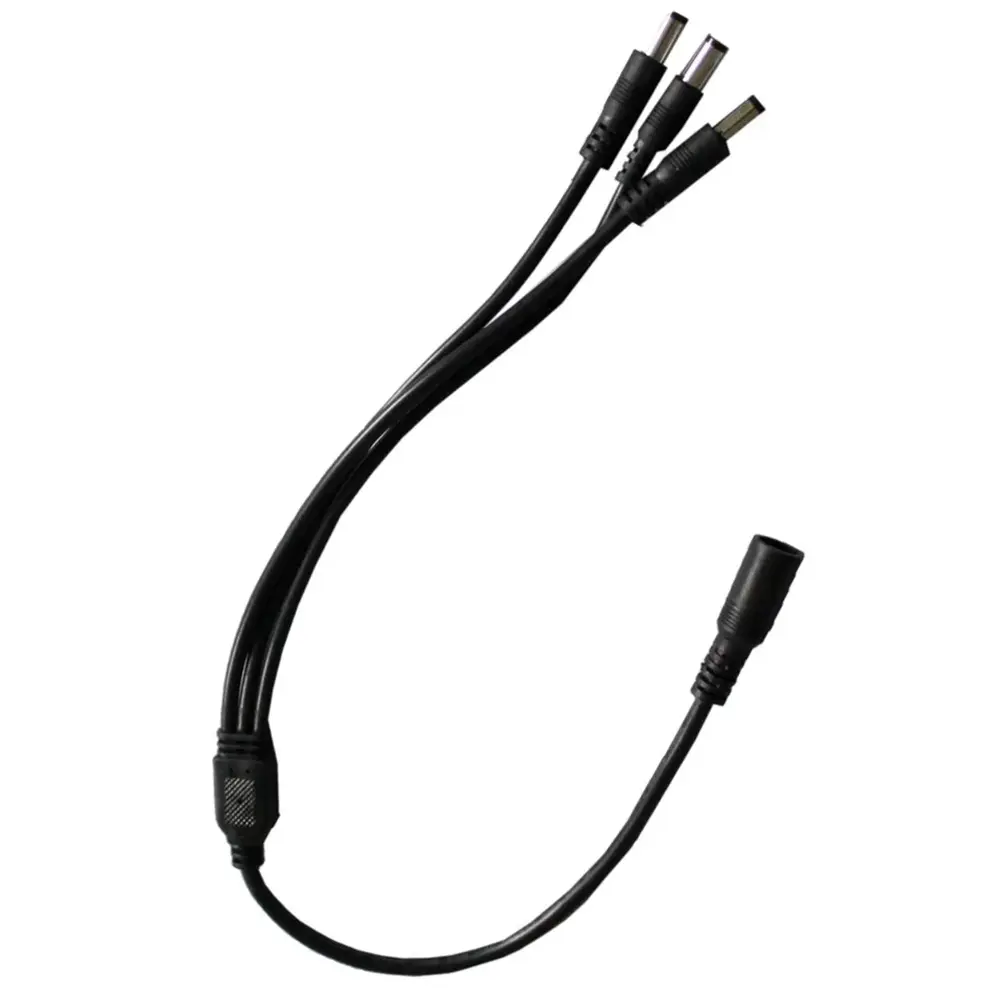
Single color splitters simplify lighting installations.
They allow users to split the power from a single power source to multiple LED strips. This function is critical in situations where it is necessary to extend the reach of lighting installations, such as in large rooms or outdoor setups. Moreover, splitters make it easy to add additional lights without needing multiple power sources.
Their versatility is unmatched.
Adopters of single color splitters find that these devices enhance both the functionality and aesthetics of their lighting systems. They eliminate the need for complex wiring, which makes the setup process more straightforward and less time-consuming.
In essence, these splitters enable the creation of seamless and expansive lighting designs. With their innate simplicity and effectiveness, they elevate the potential of single color LED strip setups, allowing spaces to be transformed efficiently and beautifully.
Understanding RGB 4-Pin Y-Splitters
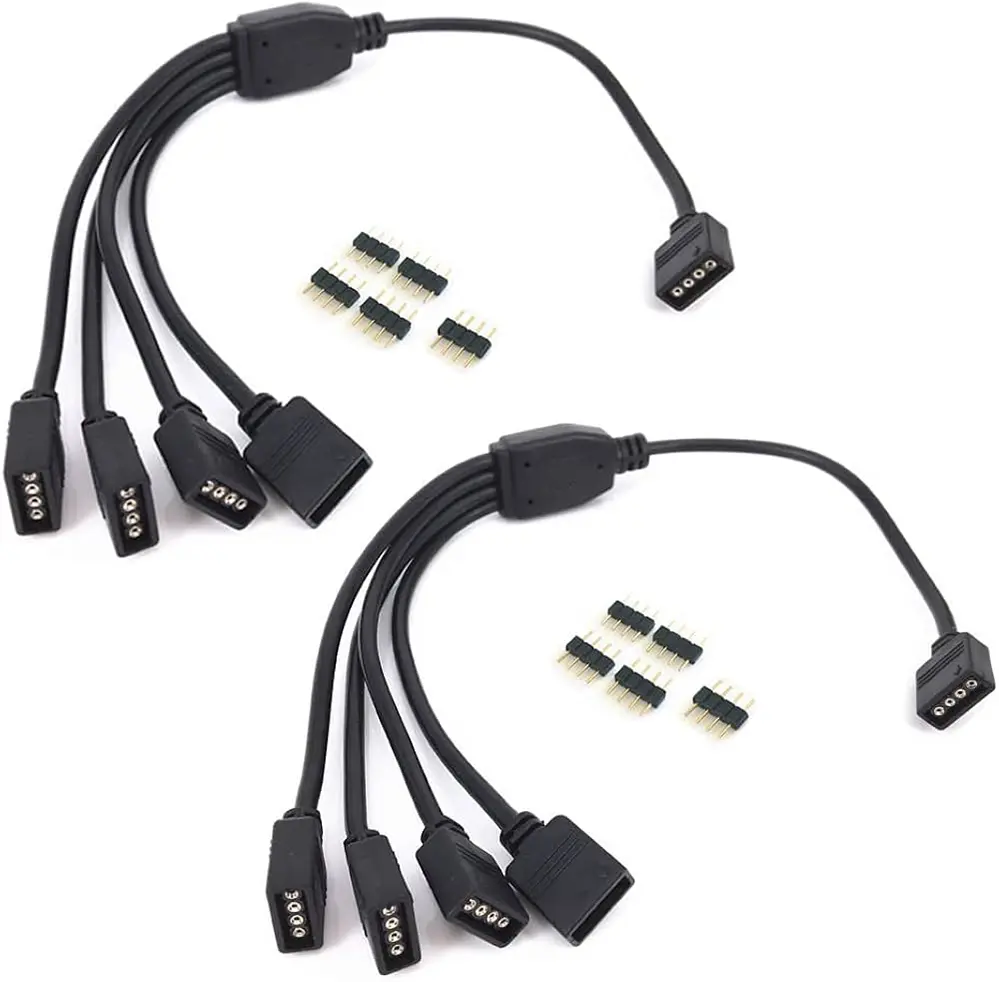
RGB 4-pin Y-splitters broaden lighting possibilities.
These versatile devices allow one to split a single power source into multiple outputs. This capability is especially valuable in intricate lighting designs, where syncing multiple LED strips to a single controller is paramount. Consequently, users can achieve stunning orchestrated lighting effects, elevating the ambiance of any space significantly.
They are key to synchronized lighting.
Using RGB 4-pin Y-splitters facilitates the parallel connection of LED strips, maintaining uniformity in color and intensity. This synchronization ensures consistent visuals across all connected strips, thereby enhancing the overall cohesion.
Designed for efficiency, these splitters minimize cable clutter. They enable simplified setups, allowing users to focus more on creative design and less on technical constraints.
Professionals and enthusiasts alike find that implementing RGB 4-pin Y-splitters can lead to advanced lighting installations. The seamless performance they offer translates to unparalleled aesthetic results, making them a preferred choice for innovative LED strip configurations.
Aligning Connections in RGB Splitters
Ensuring correct alignment in RGB splitters is essential for optimal performance of the lighting system.
Recent years, seamless synchronization in RGB lighting installations has become possible due to advancements in splitter technology. These innovations offer plug-and-play solutions.
Now, it’s not just about aesthetics; precision in connections is crucial. Correct alignment guarantees that the voltage and signal pathways synchronize flawlessly, avoiding any flickering issues.
To align connectors properly, attention to detail is key. Ensure each pin fits perfectly into its corresponding slot in the 3 or 4-pin connectors, safeguarding consistent lighting performance and vibrant visuals.
Meticulousness in every connection ensures that the entire setup communicates effectively, providing uniformly stunning lighting effects throughout.
How to Use Splitter Cables with LED Light Strips
Understanding how to use splitter cables with LED light strips can significantly elevate one’s lighting projects, optimizing both the visual appeal and functional efficiency.
First, gather all necessary materials, including splitter cables, LED light strips, and a compatible power source.
Begin by connecting the y-splitter cable to the power supply. This setup allows multiple LED light strips to be powered simultaneously, ensuring uniform brightness and color consistency across various segments.
Finally, attach the LED strips to the splitter cable’s output connectors. Each strip should light up seamlessly, provided the connections are secure. This method not only enhances the aesthetics but also facilitates a more flexible lighting arrangement, suitable for intricate designs or expansive installations.
Designing LED Projects with Splitters
Splitter cables, when used judiciously, can transform any space into a well-lit haven, enhancing both aesthetics and ambiance.
In design, they enable creators to distribute power efficiently among multiple LED strips (aka light strips) for cohesive illumination. This flexibility is essential for innovative, large-scale projects that demand uniformity and precision.
Terms like “two-way” and “three-way” describe splitter capabilities, aligning with one’s specific lighting requirements.
Planning Your LED Circuit
Designing an LED circuit with splitter cables requires careful thought about power distribution and layout.
Using splitter cables can immensely simplify complex installations, making large-scale lighting projects more manageable and visually appealing.
Begin by sketching out the circuit layout, noting where each LED strip and splitter cable will be positioned. This visual guide ensures that all components are accurately placed, reducing the risk of errors.
Identify the power requirements for the entire system, including the combined wattage of all LED strips and any additional components. This step is crucial for ensuring the power supply can adequately support the entire circuit.
Calculating Power Requirements
Accurately determining power needs is pivotal for any successful LED installation.
To begin, one must calculate the total wattage drawn by the entire setup, including all LED strips and splitter cables. This involves summing the wattage consumption of each individual strip and ensuring the total does not exceed the power supply’s capacity. A common rule is to add an extra 20% to the total wattage to account for any unforeseen requirements.
Next, it is essential to verify the voltage compatibility of the power supply and the LED strips. Most LED strips operate on either 12V or 24V, and using a mismatched power source can result in suboptimal performance or damage. Always ensure that the power supply can handle the combined wattage at the correct voltage.
Finally, one must ensure that the splitter cables can manage the power load without overheating. Quality cables are crucial for maintaining stability and efficiency. Investing in high-quality splitter cables and power supplies is fundamental to achieving a durable and reliable lighting system, thus avoiding potential pitfalls and delivering an impressive, professional-quality setup.
Installing LED Strip Splitters
To install LED strip splitters, start by gathering all necessary tools and materials: the LED strips, splitters, power supply, and connectors such as a robust connector for reliable performance.
It is important to plan the layout meticulously, allowing for the optimal placement of each component. This ensures maximum efficiency and ease of installation in the long run.
One should also test all connections before final installation to confirm everything works seamlessly.
Connecting to a Power Source
Connecting to a power source is straightforward.
First, verify the power requirements of the LED strips. This entails knowing both the voltage and the total wattage required by all the strips and splitters combined. By doing this, a user can ensure they select an appropriate power supply that can handle the demand without risk of overheating or underperformance.
Next, connect the splitter cable’s input plug to the power supply.
Make sure that connections are secure – loose connections can cause inefficiencies or even pose safety hazards. Once this is achieved, the setup is ready to power up, distributing electricity evenly through the LED strips.
To finish, review the entire assembly to guarantee everything is properly connected. Checking all connections and ensuring the power supply meets the LED strips’ specifications is essential for maintaining optimal performance and longevity. This proactive approach minimizes the risk of technical issues while fostering a visually stunning and consistent lighting effect.
Setting Up Parallel Lines
Setting up parallel lines with LED light strips using splitter cables enhances both functionality and visual appeal.
In 2013, lighting professionals began leveraging this technique extensively, enabling them to create sophisticated configurations that maximize illumination while minimizing power consumption. This advancement has rendered stunning results in architectural and interior design.
So, it’s no surprise that anyone setting up LED lights with a y-splitter can benefit from a parallel setup. Firstly, connect the splitter cable to the power source, ensuring the cable can handle multiple light strips’ combined wattage.
Secondly, run individual LED strips from the splitter into the desired areas. Each strip operates independently but shares a common power source, ensuring even lighting across multiple sections without overloading a single circuit.
This configuration allows for both flexibility and efficiency, creating an energizing atmosphere that is as inspiring as it is practical.
Common Issues and Troubleshooting
Complications can occasionally arise when implementing y-splitter cables or an adapter.
From flickering lights to complete power failures, issues may vary greatly. One common problem is poor connectivity, often resolved by ensuring all connections are secure and free from debris. Additionally, make sure to check the compatibility of the splitter cables with the specific LED light strips as differing voltages can cause malfunctions.
Incorrect wattage can also generate operational faults.
Overloading the splitter with too many LED strips can trip the circuit – a safeguard most modern designs incorporate to prevent damage – or cause uneven brightness across the installation.
Lastly, it’s vital to periodically inspect for any signs of wear or tear. Physical damage, such as nicks or cuts in the wiring, may disrupt the electricity flow, resulting in inconsistent lighting performance. Regular maintenance ensures long-lasting, vibrant illumination and reliability.
Tips for Efficient LED Strip Setups
Every LED setup should be planned meticulously.
Strategic planning will save time and ensure optimal results. It’s essential to assess the overall layout of the space before installation, determining the exact lengths needed and identifying potential power sources. Furthermore, consider the use of dimmers to adjust the brightness to achieve the desired ambiance.
Measure twice, cut once precisely.
Keep power requirements in mind. Avoid exceeding the recommended wattage for any single circuit to maintain a safe and consistent power supply across all LED strips. Utilizing high-quality splitter cables can help distribute power efficiently.
An essential tip for a cohesive look is integration. With state-of-the-art designs in 2023, seamless integration between LED strips and splitter cables ensures uniform illumination. Seasoned designers know these considerations greatly enhance both aesthetics and functionality.
Choosing the Right Power Supply
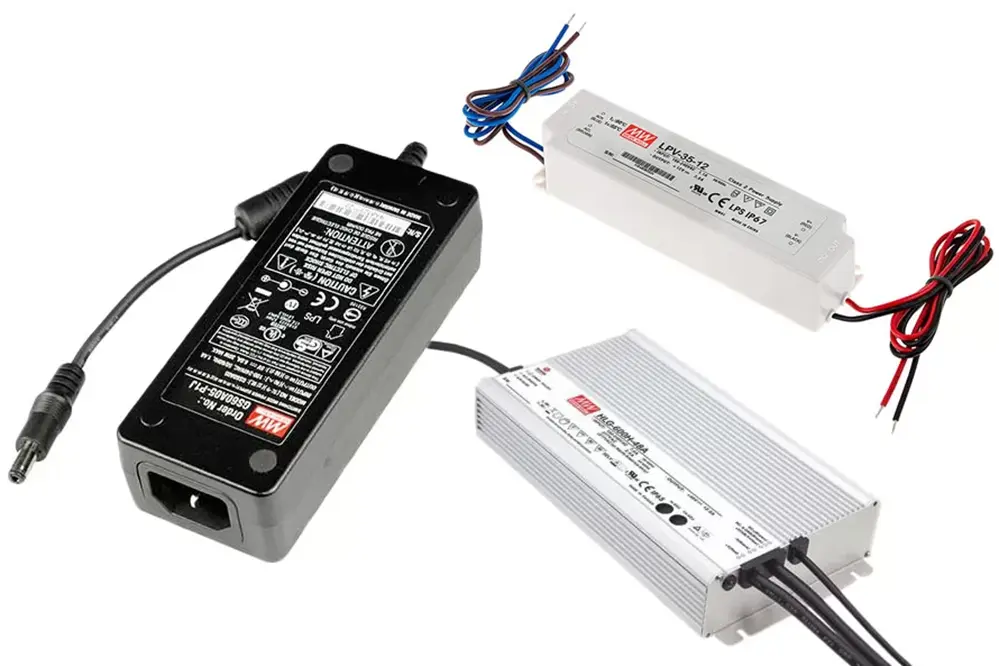
Selecting the appropriate power supply is paramount to the success of any LED strip installation.
This decision hinges on various factors such as wattage, voltage, and the total length of the LED strips. These elements play crucial roles in determining the power supply requirements.
Firstly, calculate the total wattage needed by adding up the wattage of each LED strip in the setup. Ensure that the chosen power supply exceeds this total wattage by at least 20%.
Additionally, the output voltage of the power supply must correspond with the voltage rating of the LED strips. This is typically 12V or 24V, which are standard for most LED strips.
By carefully evaluating these factors, one can select a power supply that guarantees reliability and optimal performance for their LED lighting system.
Enhancing Your Space with LED Splits
Utilizing splitter cables with LED light strips can dramatically transform a space, introducing versatile, customizable lighting.
These enhancements make any room more vibrant, functional, and aesthetically pleasing.
Effectively using splitter cables facilitates even light distribution, ensuring each strip operates efficiently.
Combining multiple LED strips via splitters can illuminate expansive areas uniformly, banishing dark spots.
Careful planning and installation of LED splits create a cohesive lighting design, highlighting key areas and enhancing architectural features.
Ultimately, the combined effect of well-placed splitter cables and LED strips elevates the ambiance, inspiring creativity and sophistication.
Conclusion: Maximizing Lighting Efficiency
Incorporating splitter cables with LED light strips enhances lighting efficiency by optimizing brightness and minimizing energy consumption. Professionals in the lighting industry advocate for this method due to its powerful and efficient light distribution. Strategic planning of layout and connections not only improves a room’s aesthetics but also promotes sustainability through energy-efficient practices.
For those looking to take their lighting projects to the next level, partnering with a reputable manufacturer can make all the difference. Unitop, a professional Chinese manufacturer of LED strip lights and LED neon strips, offers high-quality products that can help you achieve the perfect lighting setup. With their expertise and extensive range of options, you can ensure that your lighting system is both efficient and aesthetically pleasing. Contact Unitop today to explore their innovative solutions and elevate your lighting experience.
